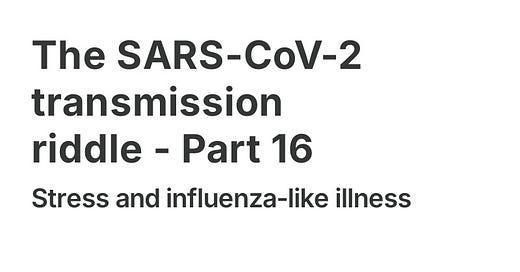In Tyrrell’s Rule of Three, we reminded people of the reality of the epidemiology of influenza-like illness (ILI) or acute respiratory infections (ARI). Call it what you want, but do not use the F word.
Tyrrell’s rule of three.
·
This post is for parents with fluey children and those who worry about respiratory infections. It comes from the recollections of one of the guys who discovered the first coronavirus.
The rule was first muttered to Tom at the end of the 90s and is still valid today, as those following our Week in Numbers series know. It goes like thi…



